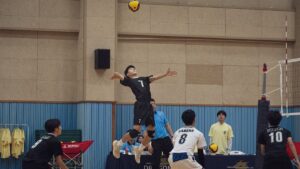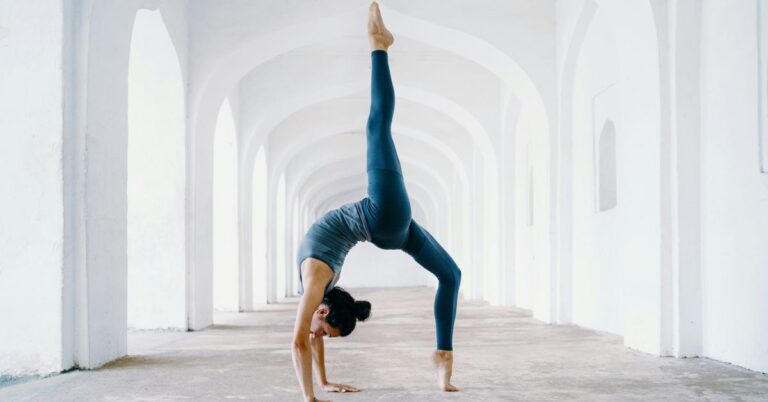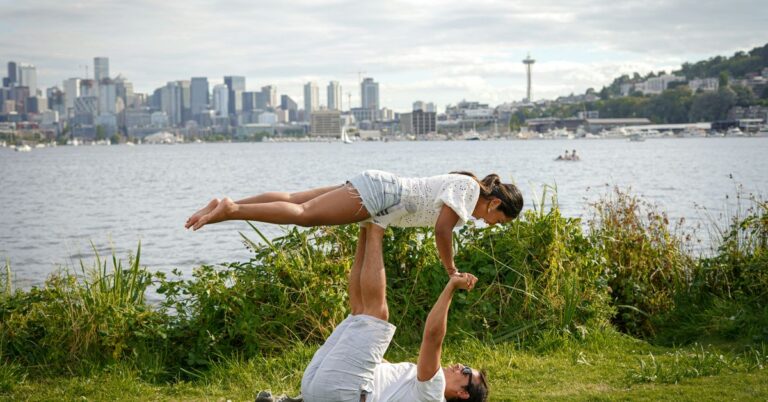Unleashing Potential Through Mindful Movement in Sports and Fitness
As a sports journalist, I often find myself mulling over the fine lines that separate a good athlete from a truly great one. What is it that makes a player shine on the field or a fitness enthusiast excel in their practice? It struck me during a recent conversation with a seasoned coach that the answer often lies not just in rigorous training or raw talent, but in something more subtle: mindful movement. This concept, once shrouded in the mystique of yoga studios and meditation circles, is now making its way into the mainstream sports and fitness culture. So, what exactly is mindful movement, and how can it unleash our true potential?
Understanding Mindful Movement
To put it simply, mindful movement is the practice of being fully present and aware during physical activity. It’s about tuning into our bodies, our breath, and the sensations we experience while moving. Think of it as a dance between mind and body, where each step, stretch, or stroke is performed with intention. This doesn’t mean you need to float around like some Zen master (though, let’s be honest, that does sound appealing sometimes). It’s more about cultivating a heightened awareness of what your body is doing while being engaged in sports or fitness routines.
But where does this idea come from? Well, the roots of mindful movement can be traced back to ancient practices, notably yoga and tai chi, which emphasize the connection between mind and body. In recent years, research has shown that this practice can enhance athletic performance, reduce the risk of injury, and even improve mental health. It’s like getting a two-for-one deal on personal development! (And I do love a good bargain.)
The Science Behind Mindful Movement
Let’s dive into a bit of the science. Studies have shown that when athletes engage in mindful movement, they often experience improvements in focus and concentration. This is crucial, especially in high-stakes sports where every second counts. For instance, one study published in the Journal of Sports Psychology found that athletes who practiced mindfulness were able to maintain their composure and make better decisions during competitions. Imagine a basketball player sinking a game-winning shot while remaining calm and collected—that’s the power of mindfulness!
Furthermore, mindful movement has been linked to enhanced recovery. After a grueling workout, being mindful can help your body recover more effectively. Think of it as giving your muscles a gentle nudge to relax and heal. When I was training for a half-marathon (yes, I have run a few; I’ll save my horror stories for another time), I found that incorporating mindful stretching post-run made a world of difference. It was like giving my legs a spa day—minus the cucumber slices on my eyes.
Mindful Movement in Different Sports
Now, let’s take a closer look at how mindful movement manifests across various sports and fitness disciplines. This is where things get interesting. Whether you’re swinging a tennis racket, lifting weights, or dancing your heart out, there’s a mindful element that can be tapped into.
1. Team Sports
In team sports like soccer or basketball, the fast pace can easily lead to mindless actions. But imagine if players practiced mindfulness through their movements. When dribbling down the court or sprinting toward the goal, being aware of the rhythm of your breath and the sensations in your legs can improve coordination and decision-making. A high-profile soccer coach once shared that he encourages his players to visualize their movements during practice, turning each drill into a form of active meditation. It’s about finding that balance between instinct and intention.
2. Individual Sports
In individual sports such as tennis or golf, the benefits of mindful movement are even more pronounced. A golfer who takes a moment to breathe and visualize their swing before hitting the ball often performs better than one who rushes through the motions. I remember watching a famous tournament where the winner attributed his success to a simple breathing technique he learned from a mindfulness coach. Who knew that focusing on your breath could be a secret weapon?
3. Fitness and Exercise
In the world of fitness, mindful movement can transform workouts from a mundane chore into a fulfilling experience. Practices like yoga and Pilates naturally incorporate mindfulness, but it can be applied to any exercise routine. Whether you’re lifting weights or running on a treadmill, being aware of your body’s alignment, breath, and muscle engagement can lead to more effective workouts. I still chuckle at the time I tried to lift weights while watching TV—let’s just say my form was more “wobbly flamingo” than “power lifter.”
Mindfulness Techniques for Athletes and Fitness Enthusiasts
So, how do we cultivate this mindful movement? It’s not as daunting as it sounds. Here are some practical techniques that can be seamlessly integrated into any sports or fitness routine:
1. Breath Awareness
Start by bringing your attention to your breath. As you engage in physical activity, take a moment to inhale deeply through your nose and exhale through your mouth. This simple act can ground you and bring your focus back to the present moment. I’ve found that even a few deep breaths before a workout can shift my mindset from “Oh gosh, I hope I survive this” to “Let’s do this!”
2. Body Scan
Before beginning any workout or practice, take a few minutes to perform a body scan. Close your eyes, and mentally check in with each part of your body, noticing any tension or discomfort. This can help you adjust your movements and prevent injuries. It’s like a mini health check-up, but without the waiting room.
3. Intentional Movement
Focus on the intention behind each movement. Whether you’re lifting weights, running, or practicing yoga, set a specific intention for your session. It could be as simple as “today, I will be present” or “I will push my limits.” This can transform a routine workout into a meaningful experience. Just don’t get too caught up; I once set the intention to “become a human pretzel” during yoga. Let’s just say my limbs had other plans.
4. Reflect and Journal
After your workout, take a few minutes to reflect on how you felt during the session. What movements felt good? What didn’t? Journaling can be a powerful tool for self-awareness and growth. I’ve kept a fitness journal for years, and I can tell you that it’s both enlightening and entertaining to look back on my early workouts (there’s nothing quite like reading about my attempts to master the ‘downward dog’ while simultaneously being convinced I was a yoga guru).
Barriers to Mindful Movement
Embracing mindful movement sounds great in theory, but let’s be real—there are challenges. Life gets busy, distractions abound, and sometimes, we just want to plow through our workouts without a second thought. Here are some common barriers that can hinder our journey toward mindful movement:
- Time Constraints: In today’s fast-paced world, finding time for dedicated mindfulness practice can be tough. But remember, even a few minutes of awareness can make a difference.
- Distractions: With smartphones and social media at our fingertips, it’s easy to lose focus during workouts. Consider leaving your phone in another room or using apps that promote mindfulness.
- Mindset: Many athletes and fitness enthusiasts are conditioned to push through pain and fatigue. The shift to mindfulness may feel counterintuitive, but it’s essential for long-term growth.
Success Stories
To illustrate the power of mindful movement, let’s delve into some success stories that highlight how embracing this approach can lead to remarkable transformations.
Take the story of a professional runner I interviewed a few years back. After years of struggling with injuries and burnout, she decided to incorporate mindfulness into her training. By focusing on her breath and listening to her body, she not only improved her performance but also found joy in running again. It was as if she had rediscovered her love for the sport, and her personal best records soon followed.
Then there’s the case of a college basketball team that struggled with cohesion and performance. After bringing in a sports psychologist who introduced mindfulness practices, the players learned to communicate better and support each other on the court. Their season ended with a championship title—a testament to the power of mindful movement and teamwork.
Mindful Movement: A Personal Journey
As I reflect on my own journey with mindful movement, I can’t help but chuckle at the times I’ve fumbled through workouts with my mind wandering to my grocery list or the latest Netflix series. But over time, I’ve learned to embrace the present moment. I remember the first time I tried a mindful run—just me, my thoughts, and the rhythm of my breath. It felt liberating. No music, no distractions. Just the sound of my feet hitting the pavement and the soft rustle of leaves in the wind. It was in that moment I realized that mindful movement wasn’t just about physical performance; it was about connection—to myself, to nature, and to the essence of the activity.
Conclusion: Embracing Mindful Movement
In a world where we often prioritize speed and results, it’s refreshing to consider the art of mindful movement. This practice not only enhances athletic performance but also nurtures our mental and emotional well-being. It’s a reminder that our bodies are not just tools to be used, but intricate systems deserving of attention and care.
So, whether you’re a seasoned athlete, a casual gym-goer, or someone just dipping their toes into the world of fitness, I encourage you to explore the nuances of mindful movement. Take a moment to breathe, connect, and appreciate the gift of movement. Trust me, it’s worth it—and who knows, you might just unlock a level of potential you never knew you had.













